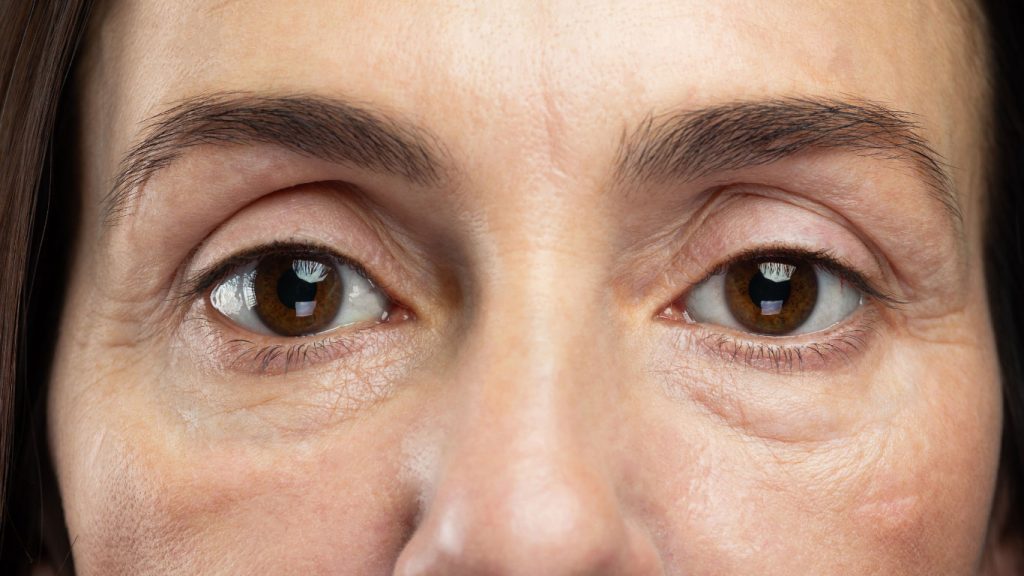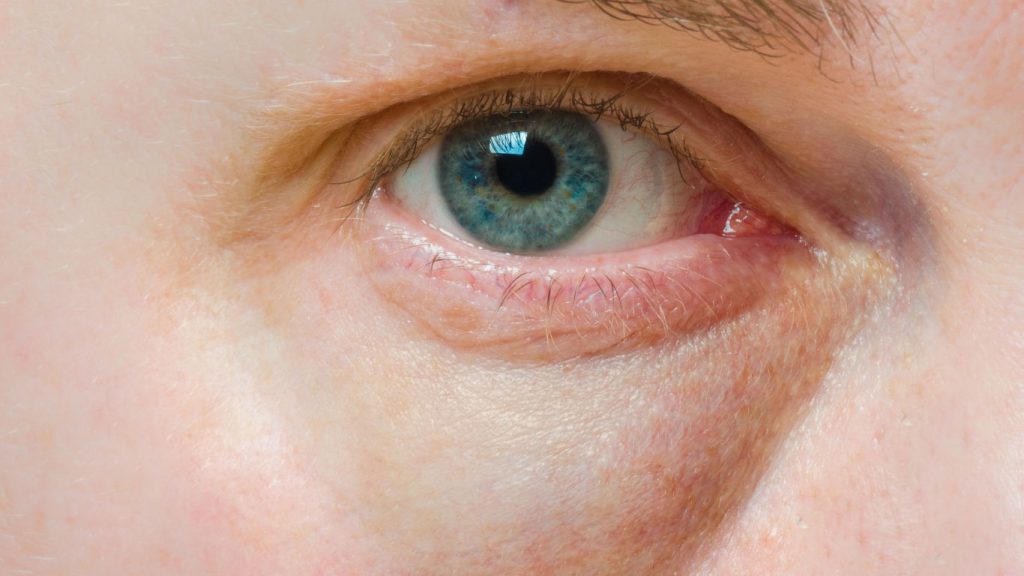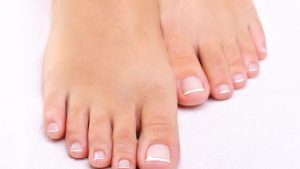Woke up with puffy eyes before a big day? It happens to the best of us. Puffy, tired-looking eyes often trace back to everyday foods that trigger water retention, inflammation, or poor sleep. When a client first asked why her eyes looked swollen after “healthy” dinners, we looked at her plate and found hidden culprits: sodium bombs, sneaky sugars, and late-night snacks that disrupt fluids and hormones. After a few swaps, her eyes looked brighter in a week — and her mornings felt lighter.
This guide breaks down nine common foods that may cause under-eye puffiness and what to try instead. Think simple swaps, steady hydration, and timing tweaks that protect skin and support lymph flow. If morning puffiness is a pattern, this list will help pinpoint triggers and create a calm, de-puffed start to the day. Pin this for quick reference the next time a salt craving hits!

Overview
This approachable, evidence-informed guide highlights food choices linked to fluid retention and morning puffiness, especially when eaten late or in large amounts. It’s ideal for busy professionals, beauty lovers, and wellness seekers who want clear guidance without cutting joy from meals. Expect practical swaps, hydration tips, and supportive routines. Personally, I love how quickly eyes look fresher after just a few days of smart adjustments — it’s one of the fastest beauty wins.
What You’ll Need
– Water bottle with measurement markers — encourages steady sipping.
– Grocery list template — makes smart swaps simple.
– Herbal teas (dandelion, ginger) — gentle support for digestion and bloat.
– Cold eye masks or chilled spoons — quick morning de-puff tool.
– A small snack plan — prevents salty, sugary late-night grazing.
The 9 Foods That May Cause Puffiness (Plus Better Swaps)
1) High-Sodium Takeout (Ramen, Pizza, Fried Rice)
– Why it puffs: Excess sodium pulls water into tissues, especially overnight.
– Better swap: Build-at-home bowls with brown rice, rotisserie chicken, steamed veggies, and low-sodium tamari.
– Pro tip: If ordering out, add extra greens, ask for light sauce, and drink a full glass of water before and after.
2) Deli Meats and Processed Cheeses
– Why it puffs: Cured meats and processed cheese are loaded with sodium and additives.
– Better swap: Roast turkey or chicken at home, pair with avocado and tomato on whole-grain bread.
– Pro tip: Check labels — aim for lower-sodium options under 140 mg per serving where possible.
3) Packaged Snacks (Chips, Crackers, Instant Noodles)
– Why it puffs: Salt-heavy, low-fiber, and often eaten late at night.
– Better swap: Lightly salted nuts, air-popped popcorn, cucumber slices with hummus.
– Pro tip: Keep prepped crunchy veggies at eye level in the fridge.
4) Sugary Desserts and Drinks
– Why it puffs: Spikes blood sugar, promotes inflammation, and can disrupt sleep quality.
– Better swap: Greek yogurt with berries and cinnamon, 70% dark chocolate squares.
– Pro tip: If dessert is a must, have it earlier in the evening with protein.
5) Alcohol (Especially Wine and Cocktails)
– Why it puffs: Dehydrates the body, then rebounds with fluid retention; also disrupts sleep.
– Better swap: Sparkling water with lime and bitters, non-alcoholic spritzers.
– Pro tip: For every drink, match with a full glass of water and stop 3 hours before bedtime.
6) Refined Carbs (White Bread, Pastries, Pasta)
– Why it puffs: Can raise insulin and promote overnight water retention.
– Better swap: Whole-grain pasta, sourdough, or quinoa bowls with olive oil and greens.
– Pro tip: Balance carbs with lean protein and healthy fats to steady blood sugar.
7) Soy Sauce and Bottled Condiments
– Why it puffs: Hidden sodium and sugar add up fast.
– Better swap: Low-sodium tamari, coconut aminos, fresh lemon, herbs, and olive oil.
– Pro tip: Season with citrus, garlic, and chili flakes for flavor without bloat.
8) Dairy for Sensitive Individuals
– Why it puffs: Can be inflammatory for some, leading to sinus congestion and puffiness.
– Better swap: Lactose-free yogurt, kefir, or unsweetened almond/coconut milk.
– Pro tip: Try a 2-week dairy-light experiment to see if mornings improve.
9) Ultra-Processed Frozen Meals
– Why it puffs: High sodium, additives, and low fiber slow digestion and trap fluids.
– Better swap: Batch-cook freezer-friendly meals (chicken chili, veggie-packed soups).
– Pro tip: Add a large side salad and a glass of water to any frozen option.
Quick Info
– Duration: 7–14 days to notice consistent changes
– Difficulty: Beginner
– Ideal Time: Focus on dinner and late-evening snacks
– Goal: Reduce under-eye puffiness, improve morning energy and skin clarity
Step-by-Step Routine
1) Hydrate early: Sip 500 ml water by noon; add another 500 ml by dinner.
2) Front-load salt: Keep higher-sodium foods for lunch, not dinner.
3) Choose balanced dinners: Protein + fiber + color + healthy fat.
4) Time the last bite: Finish eating 3 hours before bed when possible.
5) Evening tea: Ginger or dandelion tea to soothe digestion.
6) Sleep support: Dim lights, limit alcohol, elevate the head slightly.
7) Morning reset: Splash cool water, apply a cold compress, and do 2 minutes of gentle lymphatic strokes from the inner eye to temples.
Customization & Tips
– For athletes: Keep electrolytes, but choose lower-sodium blends and hydrate well.
– For plant-based eaters: Watch condiments and processed meat alternatives; lean on beans, tofu, tempeh, and plenty of greens.
– For travelers: Pack nuts, fruit, and oatmeal cups; ask for no added sauce.
– Consistency cue: Aim for 4–5 “smart dinners” per week.
– Nutrition add-on: Pair salty meals with potassium-rich sides (avocado, spinach, banana) to balance fluids.
Why This Works
Under-eye puffiness often stems from fluid shifts, sodium load, blood sugar swings, alcohol-related dehydration, and poor sleep. By lowering evening sodium, balancing carbs with protein and fiber, hydrating earlier in the day, and limiting alcohol close to bedtime, the body retains less fluid overnight. Gentle morning lymph support plus consistent nutrition choices reduce puffiness and help the eye area look smoother and brighter. Clients typically notice changes within 7–10 days, especially when dinner patterns shift.
FAQs
– Can I still eat salty foods? Yes — try them at lunch, hydrate well, and balance with potassium-rich sides.
– Are supplements needed? Not usually; focus on whole foods first. If allergies or sinus issues are involved, speak with a healthcare professional.
– What if I wake up puffy anyway? Do a quick cold compress, hydrate, and choose a lower-sodium breakfast. It usually resolves by midday.


